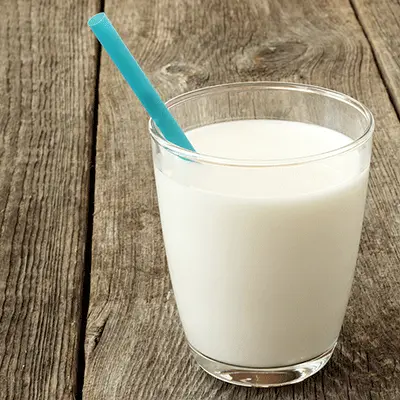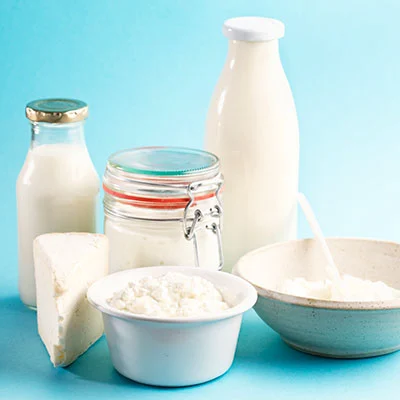Your bones support you every day – support them with dairy
Although a previous study questioned the role of milk in bone fracture risk, a new study found a link between consumption of milk and dairy foods (including milk, cheese, yogurt, cream and ice cream) and a reduced risk of hip fracture in older adults.
It is estimated that one in two women and up to one in four men age 50 or older will break a bone due to osteoporosis in their lifetime. The risk of osteoporosis can be reduced with lifestyle modifications that influence the development of peak bone mass. According to a 2015 joint scientific statement by the National Osteoporosis Foundation (NOF) and the American Society for Nutrition (ASN), calcium and physical activity have the best evidence of having a positive effect on peak bone mass, especially during late childhood and throughout puberty. Vitamin D and consumption of dairy foods like milk, cheese and yogurt have good evidence supporting their benefits for peak bone mass, although more studies are needed to strengthen these findings.
New evidence from a longitudinal study published in Osteoporosis International supports a link between long-term consumption of milk and a lower risk of hip fracture. The researchers followed two large U.S. cohorts, men over age 50 enrolled in the Health Professionals Follow-up Study and women past menopause enrolled in the Nurse’s Health Study, for 17 to 20 years. They found higher milk and total dairy food (i.e., milk, cheese, yogurt, cream and ice cream) consumption was associated with lower risk of hip fracture.
- For men and women, each additional serving of milk per day was associated with an 8 percent lower risk of hip fracture, and total dairy food consumption was associated with a 6 percent lower risk per serving.
- Men and women drinking one serving of milk per day had a 17 percent lower risk of hip fracture, while those drinking two or more servings had a 23 percent lower risk, compared to those drinking less than one serving per week.
The authors from the recent U.S. study speculate why their results differ from an earlier Swedish study that showed drinking milk was associated with increased risk of hip fracture in women. Milk in Sweden is not uniformly fortified with vitamin D, and vitamin D fortification is about half of the levels allowed in the U.S. The Swedish studies updated diet assessments once and only for a portion of the population, whereas the U.S. studies assessed milk and dairy food consumption multiple times for up to 32 years of combined follow-up. Most importantly, the greater body of evidence supports the value of milk and dairy foods for supporting bone health, especially in children and adolescents.
It’s important to recognize that what people eat when they are young can impact bone health as they age. Eating adequate calcium, vitamin D, and dairy foods as well as getting enough physical activity are lifestyle factors that contribute to bone health in childhood and adolescence. Optimizing peak bone mass by young adulthood is one strategy associated with reduced risk of bone diseases like osteoporosis later in life. In fact, a recent systematic review of 15 good-quality randomized controlled trials found eating dairy foods may benefit bone structure and development in children and teens further confirming the link between dairy consumption and bone health in youth.
“It’s never too late at any age to take steps to protect your bones,” according to the National Osteoporosis Foundation. Those steps include doing weight-bearing exercise and following a healthy eating pattern, including recommended amounts of low-fat and fat-free milk, yogurt and cheese.















